Babies cry for so many reasons and as new parents we often panic not knowing what each cry means or is about. Especially in the first year of your baby’s life. It can be so many things including colic, hunger, needing to be soothed and so much more. Well have no fear. We are here to explain the most common reasons why babies cry!
Hunger
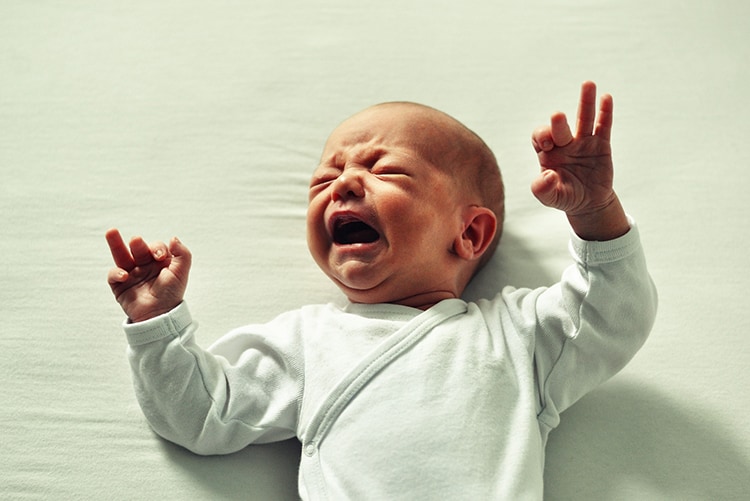
One of the main reasons your baby will cry is due to hunger. This is especially true if they are a newborn. With no other way to communicate their hunger, they will let out a shriek and cry to let you know it’s time for a feeding! If you are breastfeeding you can feed on demand, whereby you feed your baby whenever they cry and seem hungry, or you can feed according to a set schedule. Breast milk is less filling than formula, so they may need to be fed more often.
Tired
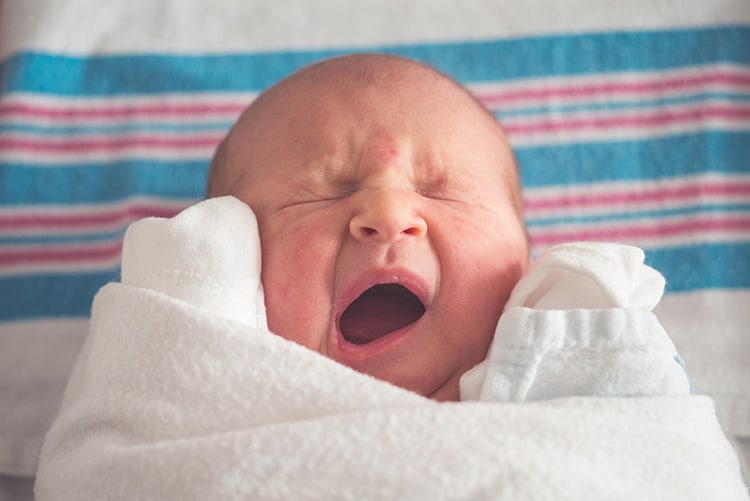
Your baby may whine or cry when they are tired. As soon as you observe cues such as eye rubbing and irritability, aim to get them down for a nap asap. Or get them to sleep to avoid them being overtired as this may inhibit their ability to sleep. For sleep help, check out the top things that disturb baby’s sleep and find out how to correct them.
Diaper Change
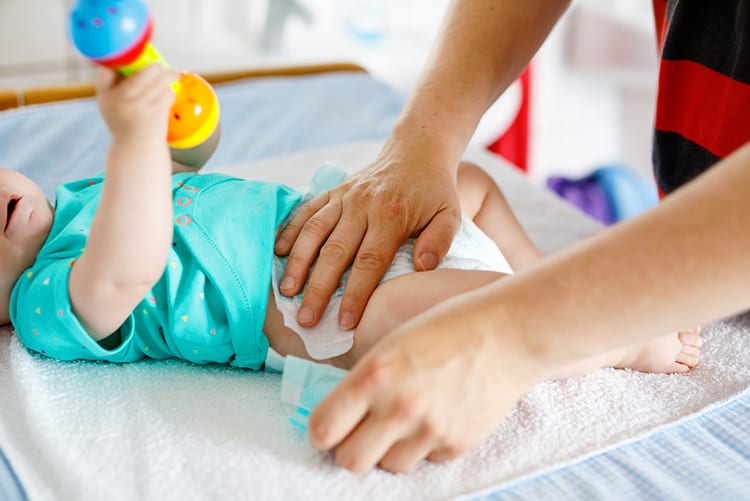
Your baby might be crying because they have a wet or dirty diaper. Try to change the diaper immediately to avoid diaper rash and get your baby dry and soothed as soon as possible!
Teething
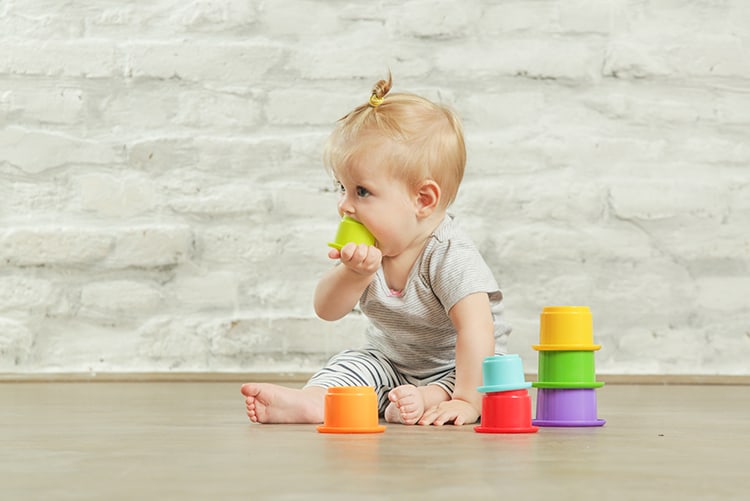
Your baby might be cutting some new teeth which can oftentimes be very painful. Babies generally develop their first teeth between 6 and 12 months of age. Try to ease their pain by massaging their gums or offering them a cold teething toy.
Gas
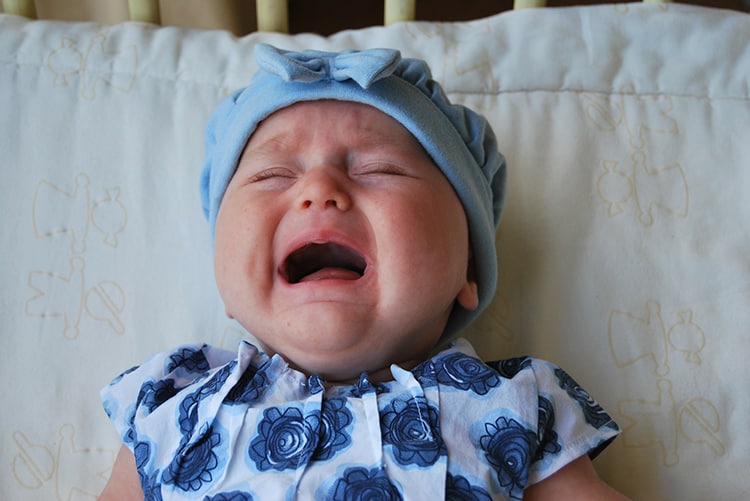
Oftentimes babies cry when they are gassy and need to be burped. Pat or rub your baby’s back intermittently throughout a feeding or right after feeding in order to avoid gas pains.
Related articles:
- How To Be A Good Parent
- Parenting Failures & How to Avoid Them
- How to Increase & Maintain Breast Milk Supply: Tips from a Holistic Certified Nutritionist
Affection

You may find that your baby cries when they need affection or cuddling. Babies like to be reassured that they are safe through close contact. Hold or rock your baby when they cry for comfort, or consider wearing your baby in a sling or carrier.
Body Temperature

Babies often run hot and can’t regulate their body temperature as effectively as older kids or adults. Your baby will let you know with a cry if they are too hot or too cold. Be careful not to overdress or underdress your baby.
Sickness

Your baby will let you know that they aren’t feeling well through their cries. If they are running a fever, they may be lethargic and their cries might be weaker. Babies often cry when they have a cold and if they are congested or their throat hurts. Consult a doctor if you notice your baby seems sick or not their usual self. According to the Mayo Clinic, you should call the doctor for any fever in an infant under 3 months old. If your baby is 3-6 months old and has a temperature of 102 F or higher, call the doctor. If your baby is 6-12 months old and has a fever of 102F or higher that lasts longer than one day, contact your doctor.
Colic
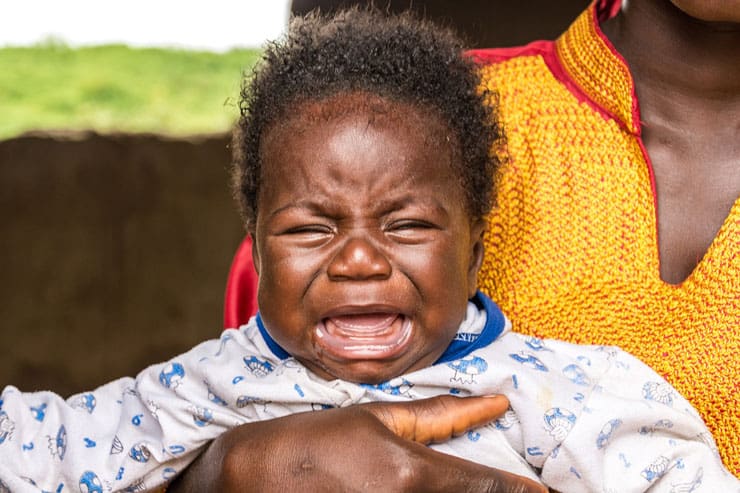
According to What to Expect, colic is designed by the “rules of three”. Your baby’s crying:
- Lasts at least three hours at a stretch
- Occurs at least three days a week
- Persists for at least three weeks in a row
Colicky crying usually peaks at 6 weeks and is generally gone by 3 months of age. Try to comfort your baby by creating a calm environment with white noise, swaddling and offering a pacifier. You can also talk to your pediatrician for more advice.
Ways To Soothe Your Baby
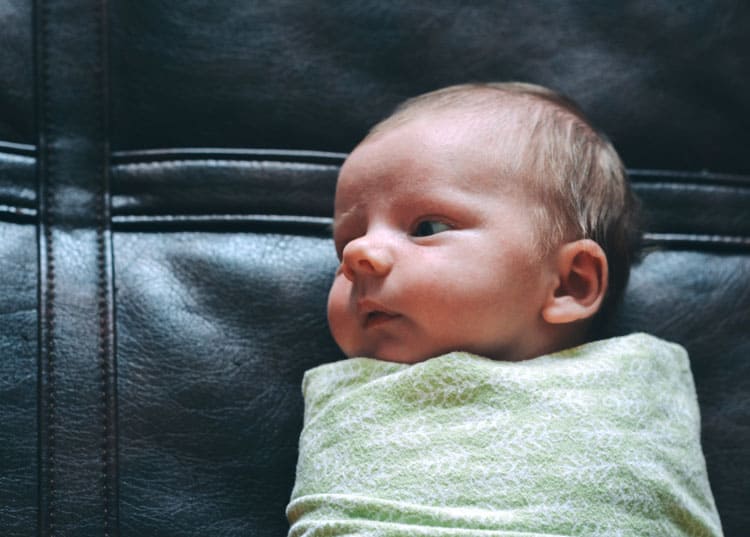
With so many reasons why a baby might be crying, parents will need to offer suitable solutions to soothe their little ones. According to pediatrician, Dr. Harvey Karp, the key to soothing a crying, fussy baby is to follow the 5 S’s. Keep in mind that Karp’s recommends this method for babies in the first 4 months of life.
1. The 1st S: Swaddle
Swaddling recreates the snug packaging that a baby feels inside the womb and creates a calm environment. It also decreases the startle reflex and increases sleep success since your baby’s arms are swaddled at their sides.
2. The 2nd S: Side or Stomach Position
The back is the only safe position for sleeping, and unfortunately, it’s the worst position for calming a fussy infant. You can calm your baby by holding them on their side, stomach or over your shoulder while they are snug in a tight swaddle.
3. The 3rd S: Shush
Recreate the shushing sound of blood flow that your baby was familiar with hearing while they were in the womb. You can do this by using a white noise machine that has a consistent shushing sound. This will provide calming comfort for your fussy baby. If you don’t have a white noise machine, you can make a shushing sound near the baby’s ear.
4. The 4th S: Swing
Rock your baby using fast, tiny motions to soothe a crying infant. Support the head and neck and keep your motions small. Be sure to move no more than 1 inch back and forth. This rocking motion is a very effective method for soothing your baby.
5. The 5th S: Suck
Many fussy babies relax into a deep tranquility when they engage in a sucking motion. A pacifier will help calm your baby in no time!

Jennifer O’Neill is an Independent Quality Provider with BabyQuip, helping families travel lighter and happier. She is a mother of two boys and enjoys working out, spending time with family and friends and of course, traveling.



Skin to skin and remembering the 4th trimester and to keep them as close as possible, hello babywearing, also help sooo much!
Now I just need you to tell me how to not let it stress me out. ;0
This is not the first time I’ve been to this blog, as a new mom I am browsing this site daily!
“Rock, Squat, Pause” as learned from TV show “Single Parents” does actually work! https://twitter.com/singleparentstv/status/1045778254206885888?lang=en
Great article! When my son suffered from colic, we found helpful playing classical music for babies on YouTube. Definitely calmed him down. Now through the teething stage, distractions from the pain are important. I take my little guy for a walk or to see the fish tank in our home.
Such a great refresher for this mama Expecting number 2 in just 4 weeks! Loved that affection was included on this list, my little boy definitely wanted cuddle time often! He’s turning 2 in 4 weeks and still regularly requests cuddles from Mama and Daddy ❣️
Depends on the age and developmental stage, but newborns I would swaddle, rock and/or nurse. As they get older I would try change of scenery – like looking out a window or going outside, lullabies, and feeding.
A nice car ride always does the trick
White noise and holding baby while bouncing on an exercise ball worked like magic for me!
Rocking and whispering to them in a soothing voice. For colic, a warm bath. For gas, place them on their belly across your legs, moving slightly back and for and pat their back. But ultimately, a momma will figure out what works best for her baby. The basic needs of food, warmth, a clean diaper, peace and quiet, good health, a routine and plenty of love should always come first and usually do the trick anyway.
White noise always seemed to and still does calm my two babies.
When my twins are upset, I play Blackbird, by the Beatles. I sang this to them when they were in my stomach and when they were in the NICU. While, not in this list, this is what works for them! ☺️
Maxwell “This Woman’s Work” worked for me. Snuggling and nursing on demand.
Love Blackbird❤
The Windi by fridababy was a big help with gas. Anything to help your little ones feel better even if it’s a little gross
Crying is totally normal and it took a while for me to come to terms that it’s OK—as long as their basic needs are being met (and the baby isn’t a newborn). Once I normalized crying and didn’t feel as stressed when it happened, I felt like I could much more calmly and efficiently try all the strategies I read about!
I have even placed baby’s carrier on top of a running dryer. The white noise and vibration help soothe.
That’s actually a really great idea… assuming you are standing right there to make sure baby doesn’t fall off!
If everything else is in order (clean diaper, not too hot/too cold, etc…) its definitely hunger! Nothing soothes like food.
My baby is teething at the moment so I identify with this. Your article is very informative and it will help several new moms know how to care for their crying babies. Thank you for this write up!
Thanks for all these great tips! I’m due in two months and know I will be revisiting this blog article when the time comes. Luckily, nursing on demand worked great with my first. Fingers crossed for the second!
Dr. Harvey Karp has some great ideas that helped us. The most effective for us were holding, swaddling and pacifier.
Dr. Harvey Karp’s methods worked like a charm for my firstborn! The swaddling was particularly effective.
My babies were always soothed by a trip outdoors! Fresh air and sunlight were magical for them.
It’s amazing what the outdoors can do for a baby!
White noise always worked like a charm with my first baby. Vacuum and a sound machine. My second kid was constant rocking, so every baby is different!
White noise is great! I still use it with my three year old!
Crying baby is one of the most difficult parts for my motherhood! After I tried all the tips mention here and some actually works for me, I found a video online from Dr. Robert Hamilton, he shows how to hold a baby and confort a crying baby, I was a little bit sceptical about it, but my new born started crying at not stop, so my husband and I decided to try this video, and mom’s you can believe that my baby stop crying immediately, my husband who has the “big hands” learned quick how to hold and calm her and still 18 months old and once he hold her in that position she stop crying.
Thanks BabyQuip for all this great tips!
When all else failed…my little one got cradled tight and rocked left to right with a little bounce….and sung you are my sunshine. The song still works to this day:)